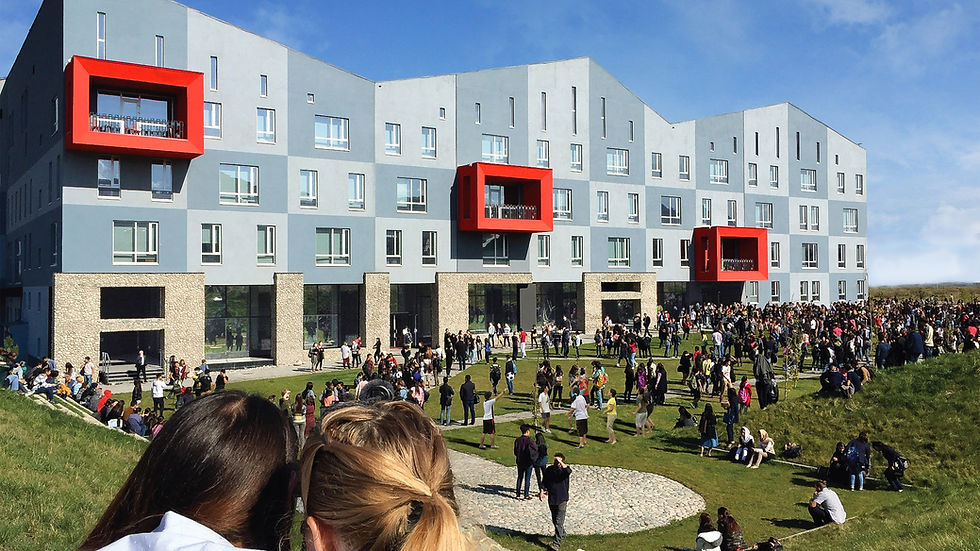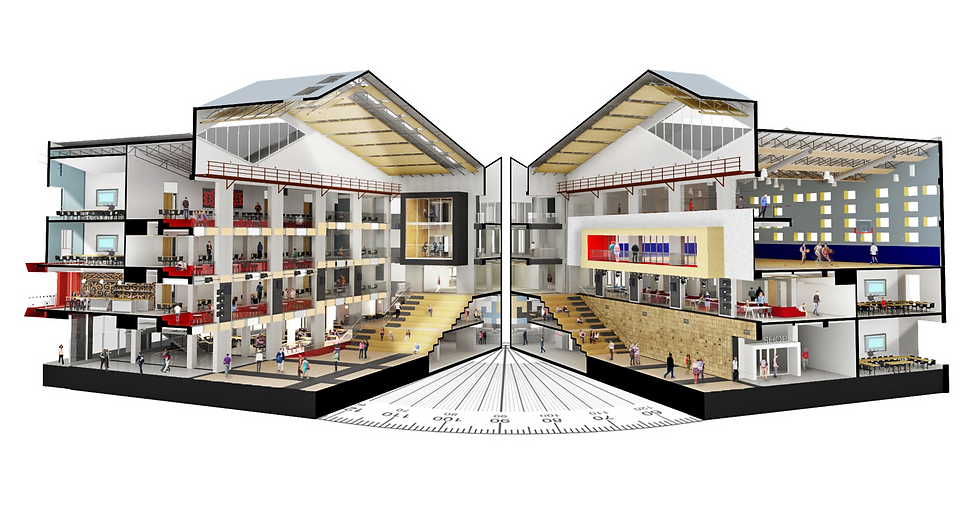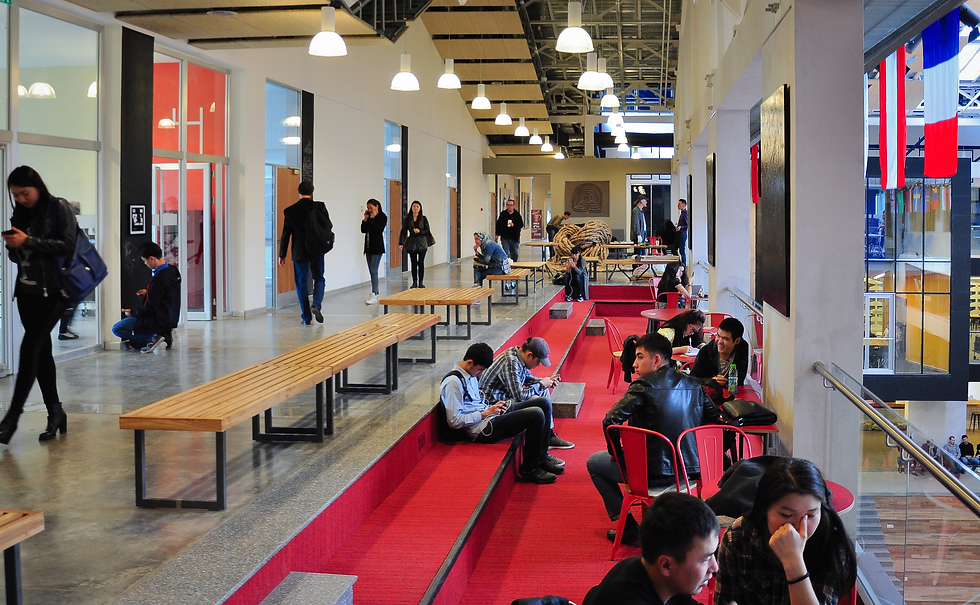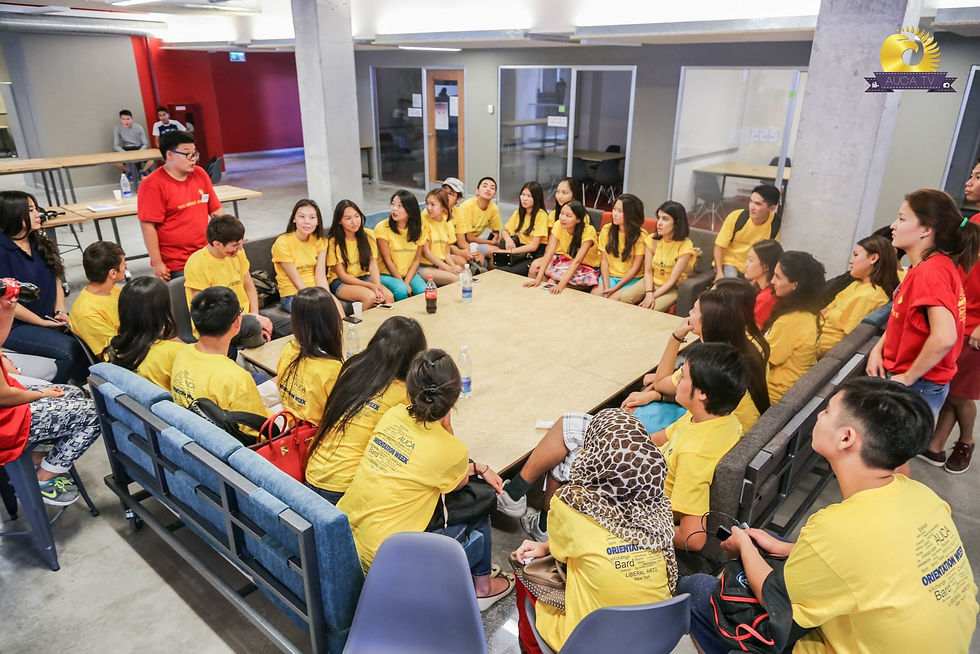
AMERICAN UNIVERSITY
OF CENTRAL ASIA
Where the East border of the former Soviet Union meets the ancient Silk Road is a modern trading post of ideas.
The American University of Central Asia (AUCA) in Bishkek, Kyrgyzstan reopened its doors in 2016 at a ground up new campus. The architectural design speaks to the region’s dramatic landscape and hospitality culture for an American style liberal arts college. Students entered the new welcoming quad and academic building like nomads with iPads, freely diving and settling into the many grand and intimate spaces.
STORY
The architecture inspired by local nomadic traditions of mobility and hospitality provides for an American style liberal arts education to boost the democratic transformation of an entire region. AUCA lives at various important crossroads (physically and culturally) where: East meets West, tribal communities meet global communities, history and tradition meet today and tomorrow, high tech meets high touch, density meets privacy, transience meets permanence, diversity meets unity… in dynamic interplay.


DESIGN CONCEPT
The building’s gabled roofs echo the surrounding alpine mountains. The rhythm of façade tones and patterns of landscape paths reflect locally crafted rugs, called shyrdaks. A peak of venting skylights provides air and light like the crown of the indigenous yurt. Rocks from the excavated site clad the exterior columns to spell, “AUCA.” Interior acoustic panels resemble native felt textures. Cantilevered red box balconies at three cafes look like open mouths for chai.


VISIBITY
FLEXIBILITY
DENSITY
As such the design’s trio of highly visible, flexible and dense spaces serve to promote participation, collaboration and interaction, key ingredients for learning.


NEW CLASSROOM: COLLABORATE
& PARTICIPATE
Like good students, each area is flexible and hardworking. Classrooms double as workshops. Wide hallways are study lounges, flowing into cafes and art galleries. The gym is also a rehearsal studio with a passageway-viewing balcony. At the building’s heart is a 5,000 square foot atrium for everyday get-togethers, academic sessions, and theatrical events. Spaces are shared, not owned. Faculty and administrators work in open office suites next to communal banks of meeting rooms. The furniture is nomadic too. Tables and seats on wheels beckon anyone to freely stage spaces as desired.







NATURE AND CULTURE
The architecture speaks to nature and culture. Together with AUCA, HMA2 Architects initiated the Public Art Program to bring together artists, artisans, designers and curators locally, regionally and internationally through a series of collaborative workshops, creative dialogue and ongoing exhibitions that fabricated several public art works at the new American University of Central Asia (AUCA) campus.


"Listen to the man who works with his hands.
He may be able to show you a better way to do it."
Louis Kahn

I am grateful for the community of hands that built the new campus of AUCA. Each hand left an invisible but lasting thumbprint on this building. Every bump on a concrete column, every cut shiny tile, every odd shaped stone, every joint between wood planks, every twist of a steel bolt is a mark of a working of hand that belongs to this mosaic of men and women.
While I did not speak their same language, I listened to their hands and read their faces. Workers snapped their fingers to get my attention to some misalignment of steel, and then raised their hands and eyebrows to ask me something. I spoke with my hands to draw details on nearby concrete surfaces or sprayed spots of paint on stair treads to indicate where railing posts were to be installed. Thumbs up was a universal sign of agreement and acknowledgment. When you passed someone on the scaffold, you routinely shook his hand. One worker’s job was to serve glasses of hot tea all day long. For good luck, the plumbing contractor team slaughtered a lamb next to the building’s loading crane, and then cooked a lunch feast for everyone.
It was an honor to lend a hand to this working community. Their friendly and earnest spirit lives and breathes in the spaces occupied by students and faculty today. Put your ear to the wall and listen.
- Henry Myerberg, Architect










